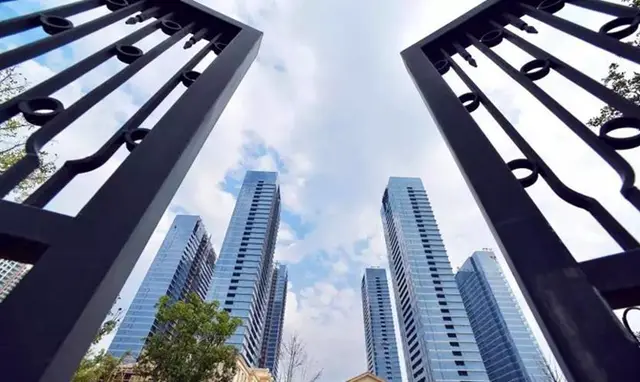Property prices in China's upper-tier cities continued to surge while the overall growth momentum has decelerated, according to statistics released Monday.
The duality makes it more pressing for authorities to further differentiate policies to avoid bubbles while reducing inventories at the same time, analysts said.
New home prices in China's 10 biggest cities including Beijing and Shanghai rose 17.2 percent year on year to an average of 22,945 yuan (3,556 U.S. dollars) per square meter in July, according to a report released Monday by China Index Academy (CIA), a property research organization.
The growth was 1.21 percentage points faster than that in June.
On a month-on-month basis, new home prices in those cities climbed 2.2 percent, up 0.68 percentage points from a month earlier.
However, from a broader perspective, fewer cities across the country registered price increases compared with June, while more cities saw price drops.
In July, new-home prices in 66 out of 100 surveyed cities rose from a month earlier, while those in 30 cities dropped, compared with 73 and 22 in June.
"The property market is becoming increasingly polarized," said Ni Pengfei, a researcher with the Chinese Academy of Social Sciences (CASS).
In upper-tier cities where the economy is vibrant, there are abundant job opportunities, an inflow of people and money and a lack of housing supply combined to push up prices.
Ni Pengfei, a researcher with the Chinese Academy of Social Sciences. File photo
The government's previous stimulus measures also played a major part by revving up credit supply, said Zhang Ming, another CASS researcher.
Authorities have cut interest rates, reduced downpayments for mortgages and removed existing restrictions in nearly all but top tier cities in the hope of boosting sales.
The monetary loosening saw results in both top-tier cities and some second-tier cities.
In Beijing, the average contract price for homes purchased in July jumped nearly 20 percent to 37,566 yuan per square meter from six months earlier, according to data released by reals estate agent Centaline Property on Monday.
In Nanjing, the capital city of east China's Jiangsu Province, new home prices surged over 30 percent year on year in July, while central China's Wuhan city posted a 21 percent increase.
For most third- and fourth-tier cities, however, the huge overhang of unsold houses remained a headache.
CIA researcher Huang Yu estimated that the combined area of homes unsold, being built and waiting for construction in China totaled 5.55 billion square meters in May.
It may take 4.7 years to destock the housing sector if homes are sold at the average speed of the past three years, Huang predicted.
The National Bureau of Statistics put the inventories of unsold homes at 714 million square meters at the end of June, only 21 million less than a quarter earlier.
Ni warned developers in smaller cities not to take the recent price increases in big cities as encouragement for more construction, saying the destocking pace in third- and fourth-tier cities was far from catching up with sales.
The CIA report forecast more differential policies by local regulators in the future, noting that home purchase restrictions may be further tightened in some areas while small cities will continue to focus on reducing inventories.
China will impede the growth of asset bubbles, said a statement released after a meeting of the Political Bureau of the Communist Party of China Central Committee last week.
Top-tier cities like Shenzhen and Shanghai have already tightened policies to curb speculative purchases. In second-tier cities such as Tianjin and Wuhan, authorities reduced the maximum mortgage loans that buyers can take out on housing provident funds in July.
Meanwhile, the future of destocking the property industry in small cities much depends on the urbanization process, which is predicted to bring more than 50 million Chinese people into cities by 2020.
Huang called for more efforts to lower the threshold for rural migrant workers to settle down in cities and improve public services for them, saying they will become the new growth driver for the property sector.
(APD)
 简体中文
简体中文

